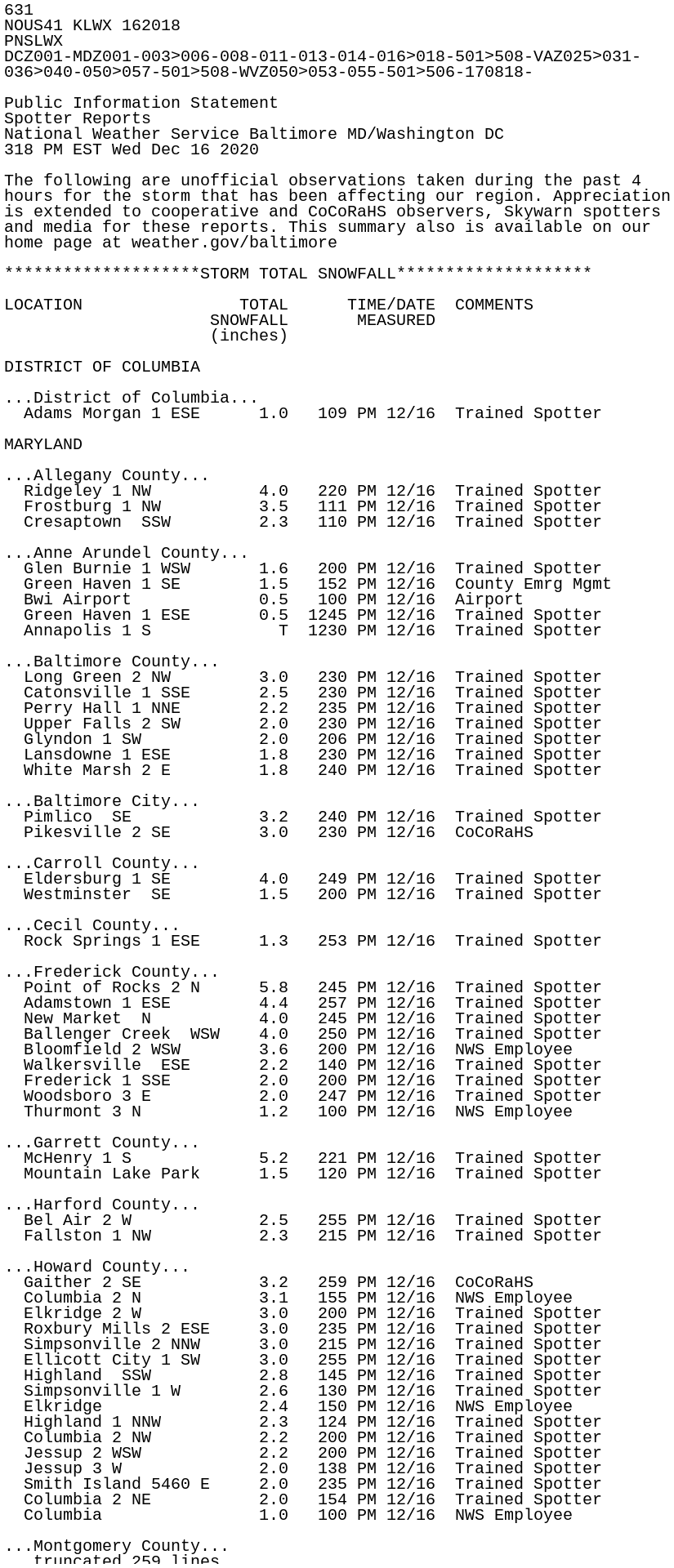LickWx
Member
Because we are all a bunch of sadists who want to see him suffer ?Why is that unfortunate ?
Because we are all a bunch of sadists who want to see him suffer ?Why is that unfortunate ?
If you knew Ji, you’d know. He’s the most hostile, toxic weenie to ever post on a weather forum. Unlike most weenies, he’s not even funny, he’s just mean.Why is that unfortunate ?
I agree 100% When the Wind is out of the NE, I always knew models would be too warm at 2m and usually a good recipe for wintry weather (if a other parameters behaved as well).You are exactly right. From the late 70's, 80's and even part of the 90' we had real Cad events. Not anymore though. Growing up before social media and weather models free to the public a rules of thumb was "the wind has to be blowing from the NE for us to get a major storm".
Unfortunately, Ji is in Leesburg out past IAD, and it seems to still be snowing there.
Dry slot is here. Temp on the hill holding at 30 with airport at 33/30. Holding out hope it stays cool and what swings through late afternoon has a chance to overcome the warm nose. NAM says it rain so ...
Scratching my head at this though:
This Afternoon
Snow and sleet. High near 32. Light and variable wind becoming northwest around 5 mph. Chance of precipitation is 100%. Total daytime snow and sleet accumulation of 1 to 3 inches possible.
Tonight
Snow and sleet, mainly before 2am. Low around 32. Northwest wind 3 to 7 mph. Chance of precipitation is 100%. New snow and sleet accumulation of less than a half inch possible.
Maybe point and click is busted.

That's more like mine too. I intentionally chose the city for the warmest option. I don't want to bash because hey have an incredibly hard job and miller B setups just totally suck. But it is weird that all we had was ZR and yet the S word is prominent in the forecast.This is what I get when I put my zip code into the Blacksburg site. Something isn't right there lol. If we switch back to snow I think at most we may get a coating.
Detailed Forecast
This Afternoon
Snow before 3pm, then snow and sleet. High near 32. Calm wind becoming northwest around 5 mph. Chance of precipitation is 100%. Total daytime snow and sleet accumulation of 2 to 4 inches possible.
Tonight
Rain, snow, and sleet, mainly before 3am. Low around 32. Northwest wind 3 to 7 mph. Chance of precipitation is 100%. New snow and sleet accumulation of less than a half inch possible.
That's more like mine too. I intentionally chose the city for the warmest option. I don't want to bash because hey have an incredibly hard job and miller B setups just totally suck. But it is weird that all we had was ZR and yet the S word is prominent in the forecast.
Looks like IAD went over to ZR at 2 PM, though. 32/ZR as of 3 PM, up from 31 at 2 PM. They could slip above freezing and get some plain old RN soon. Looks like IAD had about fourish hours of snow with maybe a couple tenths liquid equivalent, so I’m guessing they got 1-2”, which I think was a low end bust.Damn

...Loudoun County...
Hillsboro 3 NW 5.0 238 PM 12/16 Trained Spotter
Leesburg 2 NW 4.0 307 PM 12/16 Trained Spotter
Countryside 2 ESE 4.0 145 PM 12/16 Trained Spotter
Purcellville 3.5 215 PM 12/16 NWS Employee
Hughesville 1 ESE 3.5 230 PM 12/16 Trained Spotter
Leesburg 2 WSW 3.0 253 PM 12/16 Trained Spotter
Arcola 1 NNE 2.8 137 PM 12/16 Trained Spotter
Dulles International 2.1 130 PM 12/16 Airport
Arcola 2 SSE 2.0 140 PM 12/16 Trained Spotter
Ashburn 3 WSW 2.0 115 PM 12/16 NWS Employee
Countryside 3 ESE 1.8 305 PM 12/16 Trained SpotterNoOnce day I’ll get under a band like this here in the upstate View attachment 58179
Snowgasm if you’re on the right side of this. Got to smell the rain to get the chicken feathers. Someone is getting ungodly rates right now.The snowfall rate in Westminster has to be off the charts.View attachment 58180

Williamsport will get more snow in under 18 hours than most locations in the south get in 10 years.
That gal on TWC, she's bringing the goods to NYC
Probably 30 at the rate we’re goingWilliamsport will get more snow in under 18 hours than most locations in the south get in 10 years.
Man, I want this! ?
